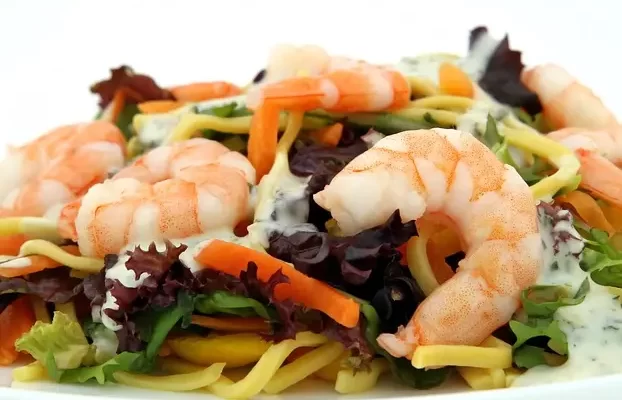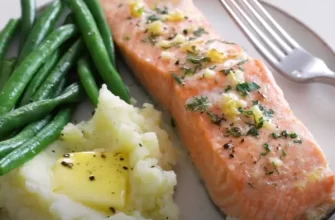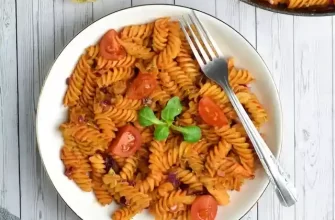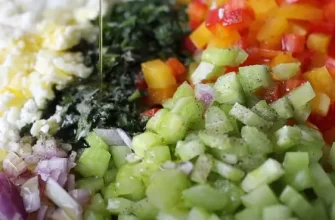Clean-eating meal plans have gained popularity over the past few years as people become more conscious about their health and the food they consume. This approach to eating focuses on consuming whole and unprocessed foods while avoiding or minimizing the intake of processed and refined foods. Clean-eating not only promotes physical well-being but also enhances mental clarity and boosts energy levels.
Overview of clean eating and its benefits
Clean eating emphasizes the consumption of fruits, vegetables, lean proteins, whole grains, and healthy fats. These nutrient-dense foods provide the body with essential vitamins, minerals, and antioxidants, supporting overall health and preventing the onset of chronic diseases. Clean-eating can also aid in weight management, improve digestion, and enhance skin health.
How to get started with a clean-eating meal plan
To get started with a clean-eating meal plan, start by stocking your kitchen with wholesome ingredients such as fresh produce, organic meats, whole grains, and nuts. Plan your meals in advance and focus on incorporating a variety of colors, flavors, and textures into your dishes. Make sure to include plenty of fruits and vegetables in each meal and prioritize drinking water to stay hydrated.

Breakfast Ideas
Healthy breakfast options for a clean-eating meal plan
When following a clean-eating meal plan, it’s essential to start your day with a nutritious and wholesome breakfast. Here are some healthy options to kickstart your morning:
- Overnight Chia Pudding: Soak chia seeds in your choice of milk overnight and top with fresh fruits and a sprinkle of nuts for a filling and nutrient-packed breakfast.
- Avocado Toast: Spread mashed avocado on whole-grain toast and top with sliced tomatoes, a squeeze of lemon juice, and a sprinkle of sea salt for a delicious and energizing meal.
- Greek Yogurt Parfait: Layer Greek yogurt with fresh berries, honey, and a sprinkle of granola for a protein-rich and satisfying breakfast option.
- Veggie Omelette: Whip up an omelette with egg whites and load it with a variety of colorful vegetables like spinach, bell peppers, and mushrooms for a hearty and nutritious meal.
Tips for creating a balanced and nutritious breakfast
To create a well-balanced and nutrient-rich breakfast, keep the following tips in mind:
- Incorporate Protein: Include a source of protein in your breakfast, such as eggs, Greek yogurt, or nuts, to provide sustained energy and keep you feeling fuller for longer.
- Include Whole Grains: Opt for whole-grain bread, oats, or quinoa to add fiber and complex carbohydrates to your breakfast, promoting digestive health and providing a steady release of energy.
- Add Fruits and Vegetables: Include a variety of fruits and vegetables in your breakfast to boost your intake of vitamins, minerals, and antioxidants.
- Limit Added Sugars: Be mindful of added sugars in breakfast cereals, flavored yogurts, and granola bars. Opt for natural sweeteners like honey or fresh fruits instead.
Lunch and Dinner Recipes
Delicious and Clean Lunch and Dinner Recipes
When following a clean-eating meal plan, it’s important to have a repertoire of delicious and nutritious lunch and dinner options. Here are a few recipes that are both clean and satisfying:
- Grilled Chicken with Roasted Vegetables: Marinate chicken breasts in a mixture of herbs, olive oil, and lemon juice. Grill the chicken until cooked through and serve with a side of roasted vegetables like broccoli, carrots, and bell peppers.
- Quinoa Salad with Avocado and Black Beans: Cook quinoa according to package instructions and let it cool. Mix in diced avocado, drained and rinsed black beans, cherry tomatoes, and a simple vinaigrette made with olive oil, lime juice, and cilantro.
- Baked Salmon with Quinoa Pilaf: Season salmon fillets with salt, pepper, and your favorite herbs. Bake in the oven until cooked to your liking. Serve with a side of quinoa pilaf made with cooked quinoa, sautéed onions, garlic, and colorful vegetables like peas and red bell peppers.
Tips for Meal Prepping and Staying on Track with Clean Eating
To stay on track with your clean-eating meal plan, consider the following tips:
- Plan your meals: Take some time each week to plan out your lunches and dinners. This will help you stay organized and ensure that you have all the ingredients you need.
- Prep ahead: Spend a few hours each week prepping ingredients like chopping vegetables, cooking grains, and marinating proteins. This will make assembling meals during the week much quicker and easier.
- Use fresh and whole ingredients: Opt for fresh produce, lean proteins, and whole grains. Avoid processed foods that are high in additives, preservatives, and added sugars.
- Portion control: Pay attention to portion sizes and listen to your body’s hunger and fullness cues. Eating slowly and mindfully can help with portion control.
By incorporating clean lunch and dinner recipes into your meal plan and following these tips for meal prepping, you can enjoy delicious and nutritious meals while staying on track with your clean-eating goals.

Snack Ideas
Clean and satisfying snack ideas for between meals
When following a clean-eating meal plan, it’s important to have nutritious and satisfying snacks to keep you energized throughout the day. Here are some clean snack ideas that you can enjoy between meals:
- Homemade trail mix: Combine a mix of nuts, seeds, and dried fruits for a healthy and portable snack. Avoid store-bought trail mixes that often contain added sugars and unhealthy oils.
- Greek yogurt with berries: Opt for plain Greek yogurt and top it with fresh berries for a protein-packed and antioxidant-rich snack. You can also add a drizzle of honey or a sprinkle of granola for extra flavor.
- Veggie sticks with hummus: Slice up some carrots, cucumbers, and bell peppers and pair them with a serving of homemade hummus. This combination provides a good balance of fiber, vitamins, and healthy fats.
- Rice cakes with almond butter: Choose whole grain rice cakes and spread a thin layer of almond butter on top. This simple yet satisfying snack offers a combination of carbohydrates, protein, and healthy fats.
- Hard-boiled eggs: Hard-boiled eggs are a convenient and protein-rich snack option. They can be prepared in advance and stored in the refrigerator for easy grab-and-go snacking.
Importance of mindful snacking and portion control
When it comes to snacking, practicing mindfulness and portion control is essential. Here’s why:
- Prevents overeating: Mindful snacking helps you become more aware of your hunger and fullness cues, preventing you from overeating and consuming unnecessary calories.
- Maintains energy levels: Choosing snacks that are balanced in macronutrients, such as protein, carbohydrates, and healthy fats, can help sustain your energy levels throughout the day.
- Supports weight management: By selecting portion-controlled snacks, you can better manage your calorie intake and support your weight management goals.
- Promotes better digestion: Opting for clean snacks that are low in added sugars and processed ingredients can support better digestion and overall gut health.
Dessert Options
Clean-eating dessert recipes for indulgence without guilt
Indulging in a sweet treat doesn’t have to mean compromising your clean-eating meal plan. With some creative twists and substitutions, you can enjoy delicious desserts guilt-free. Here are some clean-eating dessert recipes that will satisfy your cravings without sacrificing your health goals.
- Avocado Chocolate Mousse: This rich and creamy dessert is made with ripe avocados, cacao powder, and a touch of sweetener. It’s packed with healthy fats and antioxidants, making it a nutritious alternative to traditional chocolate mousse.
- Berry Chia Pudding: Combine chia seeds, almond milk, and fresh berries to create a refreshing and satisfying dessert. Chia seeds are an excellent source of fiber and omega-3 fatty acids, while berries provide a burst of natural sweetness.
- Coconut Bliss Balls: Mix shredded coconut, almond flour, dates, and a splash of vanilla extract to make these bite-sized treats. They are packed with fiber, healthy fats, and natural sweetness, making them a perfect guilt-free indulgence.
Substitutes for common unhealthy ingredients in desserts
Transforming your favorite dessert recipes into healthier versions involves swapping out unhealthy ingredients with more wholesome options. Here are some common substitutes that can be used in desserts:
- Whole Grain Flour: Replace refined flour with whole grain flour, such as whole wheat or oat flour. These alternatives are higher in fiber and have a lower glycemic index.
- Natural Sweeteners: Instead of using refined sugars, opt for natural sweeteners like honey, maple syrup, or dates. They add sweetness without causing a rapid spike in blood sugar levels.
- Healthy Fats: Substitute unhealthy fats like butter and margarine with healthier options such as avocado, coconut oil, or nut butter. These alternatives provide essential nutrients and can contribute to a creamy texture.
By incorporating clean-eating dessert recipes and making ingredient substitutions, you can enjoy your favorite sweets while staying true to your healthy lifestyle. Remember, it’s all about nourishing your body without sacrificing indulgence.
Drink Choices
Healthy drink options to complement a clean-eating meal plan
When following a clean-eating meal plan, it’s important to choose beverages that align with your healthy lifestyle. Opting for alternatives to sugary drinks can help you stay hydrated and avoid unnecessary calories. Here are some healthy drink options that can complement your clean-eating diet.
- Water: The importance of staying hydrated cannot be emphasized enough. Water is essential for digestive health, nutrient absorption, and regulating body temperature. It has zero calories and is the best choice when it comes to staying hydrated.
- Herbal Teas: Herbal teas, such as chamomile, peppermint, or green tea, are great alternatives to sugary or caffeinated beverages. They provide a variety of health benefits, such as promoting relaxation, aiding digestion, and boosting the immune system.
- Infused Water: If you prefer some flavor in your drinks, try infusing water with fruits, vegetables, or herbs. Lemon, cucumber, mint, and berries are popular choices that can add a refreshing touch to your hydration routine.
- Homemade Smoothies: By making your own smoothies, you have control over the ingredients and can avoid added sugars or artificial flavors. Use a base of unsweetened almond milk or coconut water and add fruits, vegetables, and healthy fats like avocado or nut butter for a nutritious and satisfying drink.
The importance of staying hydrated and avoiding sugary beverages
Staying hydrated is crucial for overall health and well-being. Drinking an adequate amount of water helps maintain proper bodily functions, including digestion, circulation, and temperature regulation. When following a clean-eating meal plan, it becomes even more important to focus on hydration and make conscious choices to avoid sugary beverages.
Sugary drinks, such as soda, energy drinks, or fruit juices, are often loaded with excessive amounts of added sugars. These empty calories can lead to weight gain, increased risk of chronic diseases like diabetes and heart disease, and other health issues.
By choosing healthier drink options, you can avoid the negative consequences of sugary beverages. Opting for water, herbal teas, infused water, and homemade smoothies can provide hydration and additional nutritional benefits without unnecessary added sugars.
Weekly Meal Plan and Grocery List
A sample weekly meal plan for clean eating
Planning your meals in advance is an excellent way to stay on track with your clean eating goals. Here’s a sample weekly meal plan to help you get started:
- Monday:
- Breakfast: Oatmeal with mixed berries and almond butter
- Lunch: Quinoa salad with roasted vegetables and grilled chicken
- Snack: Apple slices with unsweetened peanut butter
- Dinner: Baked salmon with steamed broccoli and brown rice
- Tuesday:
- Breakfast: Greek yogurt with sliced banana and chia seeds
- Lunch: Mixed green salad with grilled shrimp and avocado
- Snack: Carrot sticks with hummus
- Dinner: Turkey meatballs with zucchini noodles
- Wednesday:
- Breakfast: Spinach and feta omelette with whole wheat toast
- Lunch: Chickpea salad with cucumber, tomato, and feta cheese
- Snack: Homemade trail mix with nuts and dried fruits
- Dinner: Grilled chicken breast with roasted sweet potatoes and green beans
- Thursday:
- Breakfast: Protein smoothie with spinach, almond milk, and berries
- Lunch: Quinoa and black bean burrito bowl with salsa and guacamole
- Snack: Greek yogurt with honey and granola
- Dinner: Baked cod with quinoa pilaf and roasted asparagus
- Friday:
- Breakfast: Overnight chia pudding with almond milk and sliced fruits
- Lunch: Lentil soup with a side of mixed green salad
- Snack: Rice cakes with avocado and cucumber slices
- Dinner: Grilled tofu with stir-fried vegetables and brown rice
Tips for creating a grocery list and planning meals in advance
When creating your grocery list for your clean eating meal plan, keep these tips in mind:
- Plan your meals before grocery shopping: Take some time to decide what meals you want to make for the week. This will help you create an accurate grocery list and avoid unnecessary purchases.
- Include a variety of fruits and vegetables: Fill your list with different types of fruits and vegetables. Aim to include a wide range of colors to ensure you’re getting a variety of nutrients.
- Choose whole, unprocessed foods: Opt for whole grains, lean proteins, and healthy fats. Avoid processed foods, sugary snacks, and drinks high in added sugars.
- Consider batch cooking: To save time during the week, prepare large batches of meals that can be stored and reheated later.
- Don’t forget pantry staples: Remember to stock up on pantry essentials like whole grains, legumes, canned tomatoes, and spices.
By following these tips and utilizing a weekly meal plan, you can ensure that your clean eating journey is well-organized and successful. Happy cooking and enjoy your nutritious meals!

Incorporating Clean Eating into Everyday Life
How to maintain a clean-eating lifestyle beyond the meal plan
Maintaining a clean-eating lifestyle goes beyond just following a weekly meal plan. Here are some tips for incorporating clean eating into your everyday life:
- Meal Prepping: Take the time to plan and prepare your meals in advance. This will ensure that you have healthy options readily available and reduce the temptation to reach for unhealthy snacks or fast food when you’re busy or tired.
- Focus on Whole Foods: Make a conscious effort to include a variety of whole foods in your diet. Choose fresh fruits and vegetables, lean proteins, whole grains, and healthy fats. Minimize processed foods, sugary drinks, and snacks high in added sugars.
- Read Food Labels: Be aware of the ingredients in the packaged foods you purchase. Avoid products that contain artificial additives, preservatives, and excessive amounts of salt and sugar. Opt for foods with minimal ingredients and recognizable, natural components.
- Stay Hydrated: Drink plenty of water throughout the day. Hydration is essential for overall health and can help control cravings and prevent overeating.
- Listen to Your Body: Pay attention to how certain foods make you feel. Notice how different foods affect your energy levels, digestion, and overall well-being. Adjust your diet accordingly to what works best for your body.
Finding balance and flexibility while sticking to a clean-eating approach
While it’s important to prioritize clean eating, it’s also essential to find balance and flexibility within this approach. Here are some strategies to achieve this:
- Allow for Occasional Indulgences: It’s okay to indulge in your favorite treats from time to time. Allowing yourself the occasional splurge can help you satisfy cravings and prevent feelings of deprivation.
- Practice Mindful Eating: Be present and mindful when you eat. Focus on enjoying your food, savoring each bite, and listening to your body’s hunger and fullness cues. This can help prevent overeating and promote a healthier relationship with food.
- Find Healthy Alternatives: Explore healthier alternatives to your favorite comfort foods. Get creative in the kitchen and experiment with nutritious ingredients to recreate meals that are both delicious and nourishing.
- Make Social Eating Work for You: When dining out or attending social gatherings, make choices that align with your clean-eating goals. Look for healthier options on the menu, choose grilled or steamed dishes, and practice portion control.
Conclusion
In conclusion, incorporating clean eating into your everyday life is a worthwhile endeavor that can benefit your overall wellbeing. By following a clean-eating meal plan, you can nourish your body with whole foods, minimize processed foods, and make healthier choices. This can lead to increased energy levels, better digestion, and improved overall health.
Benefits of a clean-eating meal plan and its impact on overall wellbeing
Following a clean-eating meal plan offers numerous benefits. Firstly, it provides your body with essential nutrients and a balanced diet, which can support optimal health and wellbeing. Secondly, clean eating can help in weight management and maintaining a healthy body weight. By focusing on whole foods and minimizing processed and sugary foods, you can control your calorie intake and improve your body composition.
Furthermore, clean eating can boost your immune system and reduce the risk of chronic diseases. By consuming nutrient-dense foods, you can provide your body with the necessary vitamins, minerals, and antioxidants that support a strong immune system and protect against illness.
Tips for long-term success and making clean eating a sustainable habit
To make clean eating a sustainable habit and achieve long-term success, it is important to approach it with a flexible mindset. Allow yourself occasional indulgences and practice mindful eating to prevent feelings of deprivation. Additionally, finding healthier alternatives to your favorite comfort foods can make the transition to clean eating more enjoyable.
Make social eating work for you by making choices that align with your clean eating goals when dining out or attending social gatherings. Lastly, strive for progress, not perfection. Remember that clean eating is a journey, and finding a balance that works for you and your lifestyle is key to long-term success.
By incorporating these tips, you can make clean eating a sustainable lifestyle habit that positively impacts your overall wellbeing.









